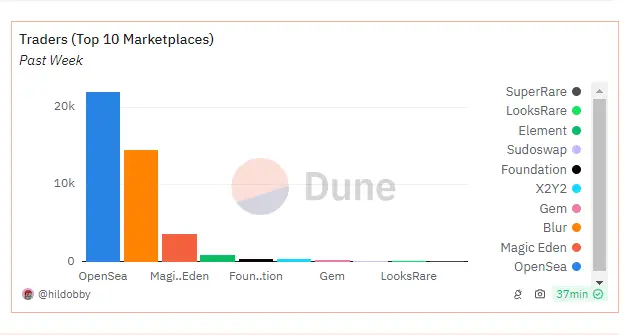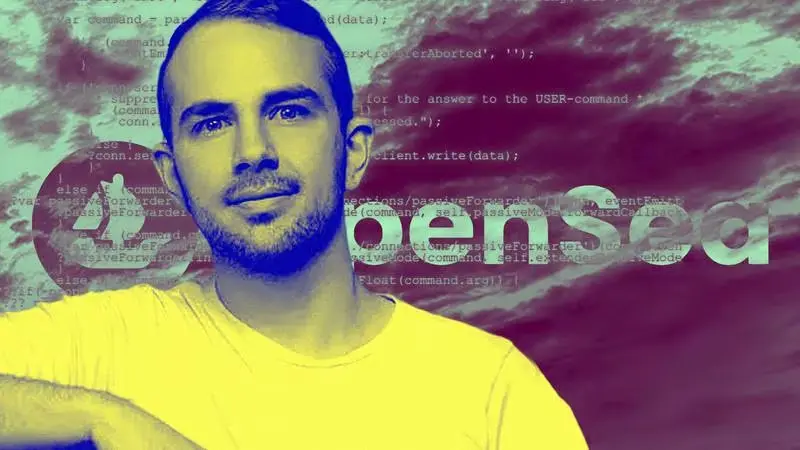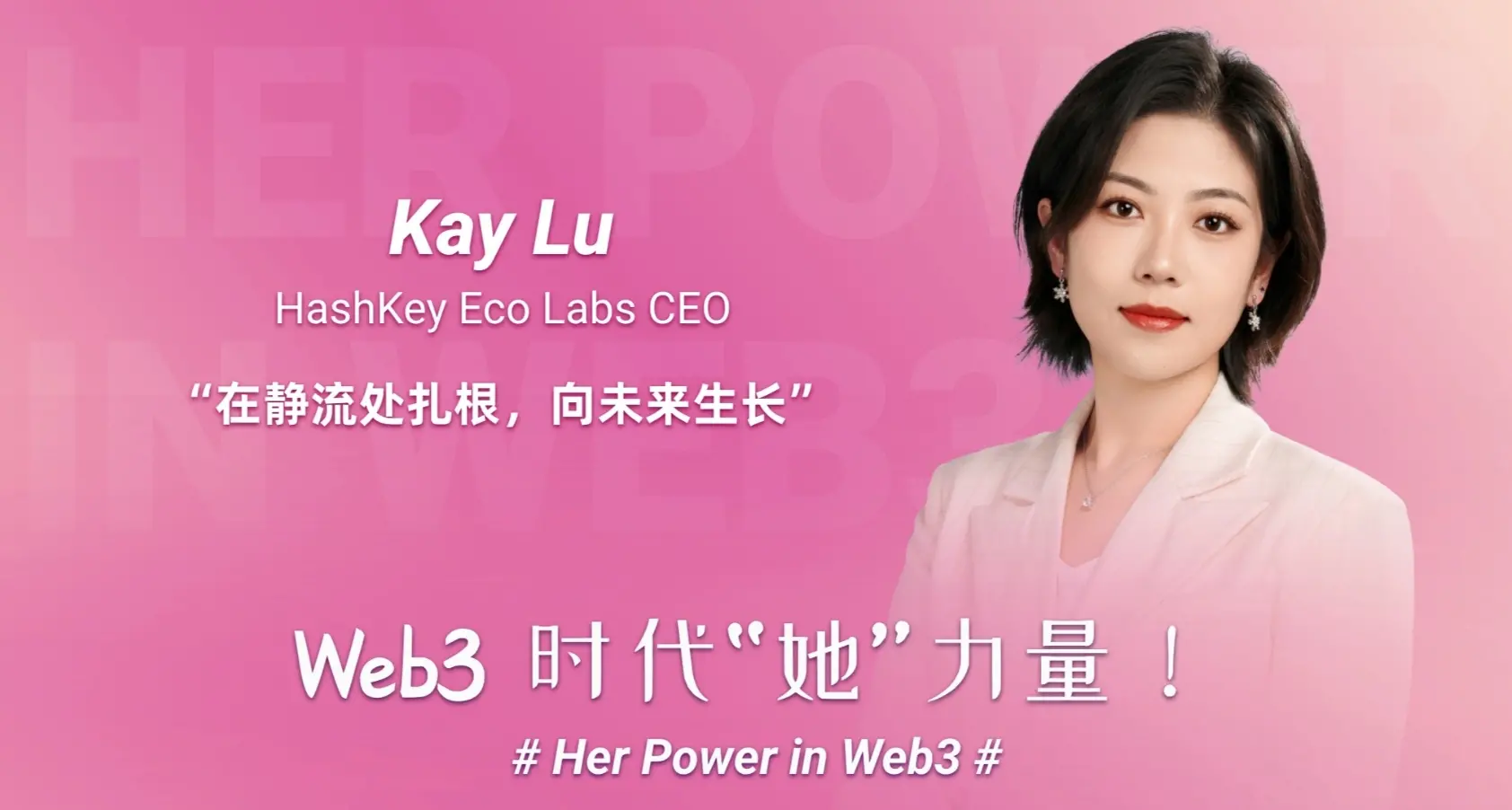From a $13 billion valuation to market adjustment: OpenSea's future strategy, is it merely adapting to the game or reshaping the rules?
OpenSea, the platform that rose to prominence during the Web3 wave, has become a benchmark in the NFT market with its innovation and lasting impact. From its low-key start in 2018 to its valuation soaring to $13 billion in 2021-2022, OpenSea's development trajectory is nothing short of legendary. Although the initial market response was tepid, through relentless efforts, OpenSea's performance exploded in 2020, showing significant growth. Particularly in 2021, the NFT craze drove its trading volume to $350 million in July, and it successfully secured $100 million in funding, pushing its valuation to $1.5 billion. Following this, trading volume surged to $3.4 billion in August, with commission revenue reaching $85 million, solidifying its market leadership.
However, behind the success lie challenges. In 2022, market fluctuations led to a sharp decline in OpenSea's monthly trading volume, plummeting from nearly $2.6 billion in May to less than $700 million in June, eventually dropping to $120 million, far below peak levels, with significant shrinkage in valuation and market share.
In the face of challenges, OpenSea did not stop exploring new paths. In 2022, it attempted to reshape its growth momentum through strategies such as acquiring the NFT aggregation tool Gem. Although multiple acquisitions did not immediately turn the tide, OpenSea's commitment to innovation and market adaptability still leaves people hopeful for its future.
In a recent market analysis, OpenSea ranked first in the top 10 marketplaces list last week, with a user activity of 21,975, far ahead of the second-ranked Blur, which had an activity of 14,444.
The next part of the article will delve into how OpenSea continues to consolidate its leadership position in the NFT market after facing multiple challenges, as well as the challenges and opportunities it faces.

Optimistic OpenSea CEO: Is there really no regret in the face of potential acquisition?
In a recent interview, OpenSea's CEO and co-founder Devin Finzer revealed discussions about acquisition intentions. Although he did not specify a timeline or the proposing party, his attitude indicated that OpenSea is open to potential partners. Finzer emphasized that while OpenSea is not actively seeking buyers and has no immediate plans for acquisition, they maintain an optimistic openness towards deals that could bring collaboration opportunities.
Furthermore, Finzer expressed no concern over the rise of its competitor Blur, reiterating OpenSea's commitment to building a secure platform environment by actively delisting suspicious NFT collections to protect users. This focus reflects OpenSea's insistence on brand value and user trust.
Although OpenSea once held about 90% of the NFT market share, recent data shows that its monthly trading volume has significantly declined. Meanwhile, Blur has become the new darling of the top markets with its token airdrop strategy. However, Finzer's focus is on the core value of the brand—ensuring the safety and reliability of user transactions, rather than competing for short-term market share.
After a significant adjustment in the NFT industry, acquisition discussions have become a focal point. For OpenSea, this is not just about market share competition, but also about how to find new growth points and opportunities amidst change. OpenSea has actively positioned itself through mergers and acquisitions, including the acquisition of the NFT aggregation tool Gem and other crypto technology companies, demonstrating its emphasis on expanding its business and attracting talent.
At the same time, Finzer is optimistic about collaborating with luxury brands to develop customized NFT projects. He believes that as industry personnel gain a deeper understanding and maturity regarding NFTs, such collaborations are expected to open up new market opportunities. Additionally, he mentioned the growing trend of NFT exchanges with physical goods and the potential for brands to enter the metaverse, all of which present new development opportunities for OpenSea.
After a period of market adjustment, OpenSea maintains a positive outlook for the future. Despite having to lay off employees last year to adjust team size, Finzer sees a more flexible team that can adapt to market changes. While facing challenges, OpenSea is also exploring and seizing new opportunities, preparing to play an important role in the next development phase of the NFT market.

OpenSea's Multi-Dimensional Offensive: From Game Streaming to Luxury Brand Collaborations, Continuous Upgrading of Brand Power and Innovative Vitality
OpenSea is not only the leader in the NFT market but also a pioneer in industry innovation and collaboration. A recent series of activities showcase its key initiatives in ecological construction and brand collaboration, revealing its potential next steps.
Game streaming leads the trend: On March 22, OpenSea live-streamed the game Sharpenel through its official platform, marking its exploration into the gaming field and real-time interaction. This step not only expanded OpenSea's user base but also enhanced its influence in the entertainment and virtual interaction sectors.
On March 21, OpenSea announced the launch of the Seaport 1.6 NFT market protocol on the X platform. This new protocol introduces Seaport hooks functionality by leveraging Ethereum's Cancun upgrade, allowing developers to build applications to enhance the utility and liquidity of NFTs. This move not only reduces transaction costs but also provides developers with greater creative space, accelerating technological innovation and ecological development in the NFT market.
Innovative collaboration with the Coachella music festival: On March 6, OpenSea announced a partnership with the Coachella music festival to launch three NFT series based on the Avalanche chain, offering innovative products that combine virtual experiences with real-world benefits. This not only provides participants with a unique VIP experience but also showcases OpenSea's leadership in merging real and virtual experiences.
A new chapter in luxury brand collaborations: Finzer recently met with executives from several luxury brands to discuss developing customized NFT projects. Compared to early explorations with brands like Gucci and Louis Vuitton, OpenSea is now more focused on deepening collaborations with luxury brands, aiming to develop richer and more mature NFT application projects. This indicates that OpenSea is not only at the forefront of technological innovation but is also expanding the application of NFTs in the high-end market.

In the Whirlwind of the NFT Field, Where Will OpenSea Navigate?
2023 has witnessed profound changes in the NFT market landscape, where OpenSea faces a complex situation of new challenges and opportunities. On one hand, the rise of Blur challenges OpenSea's market dominance; on the other hand, the emergence of NFTs on the Bitcoin chain and new assets like ERC404 bring new development directions to the entire NFT field.
OpenSea continuously consolidates its market position through technological innovation and cross-industry collaboration, such as launching the Seaport 1.6 protocol, collaborating with the Coachella music festival, and exploring new projects with luxury brands. These initiatives reflect OpenSea's efforts to expand its business scope and enhance user experience.
However, with the rapid evolution of the market, including the new trend of Bitcoin NFTs led by Ordinals and the emergence of new trading platforms like UniSat, competition in the NFT market has become more diversified. The challenges OpenSea faces include not only how to maintain its leading position in traditional NFT trading but also how to effectively respond to the impact of emerging asset classes and trading models.
In the increasingly fierce competition of the NFT market, how will OpenSea's future unfold? Can it maintain innovation, adapt to market demands, and continue to hold its position as an industry leader amidst this ever-changing tide? Or does it need to seek new directions and collaboration models to address the challenges posed by emerging competitors and asset classes? This is a question that OpenSea and the entire NFT ecosystem need to face together.










